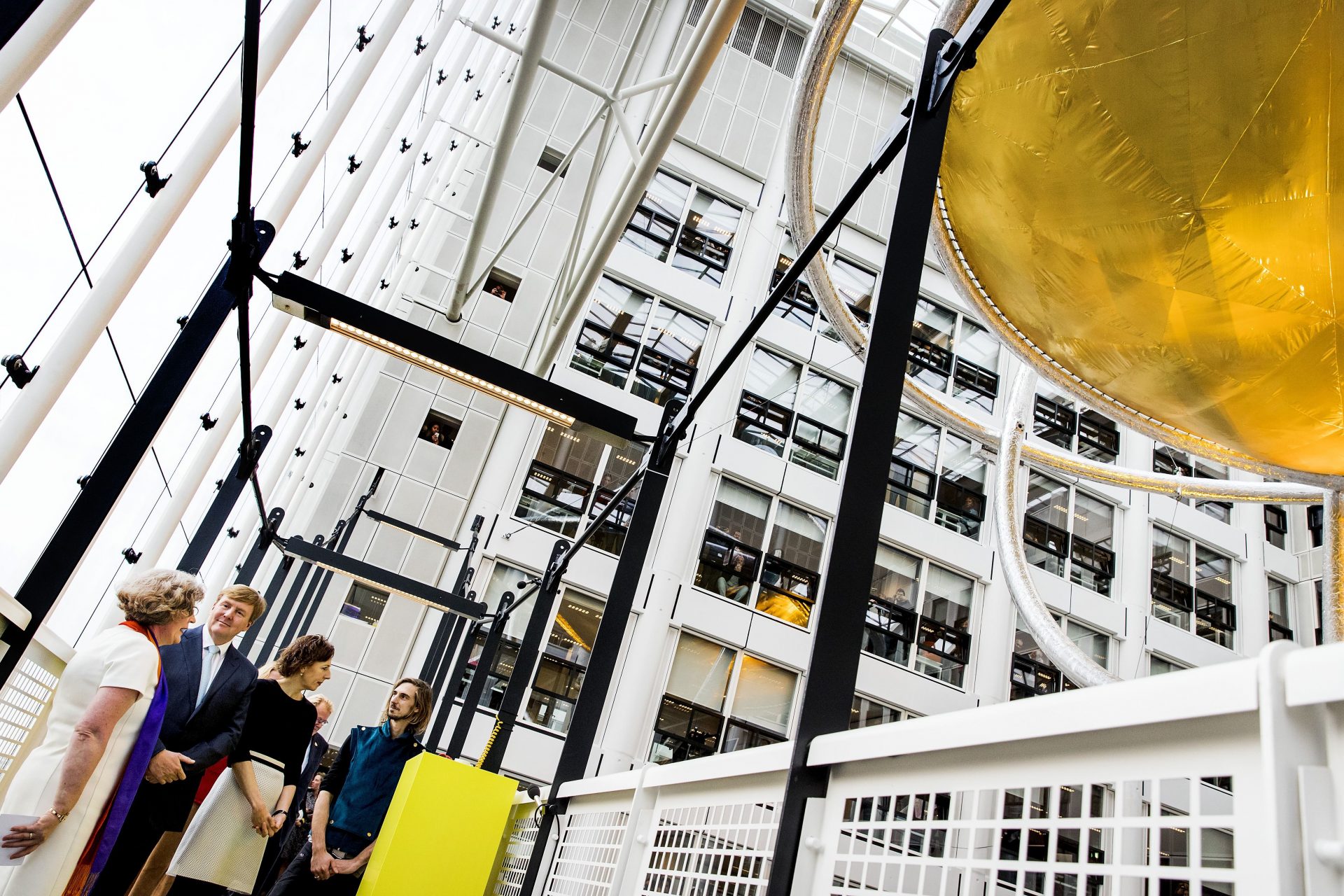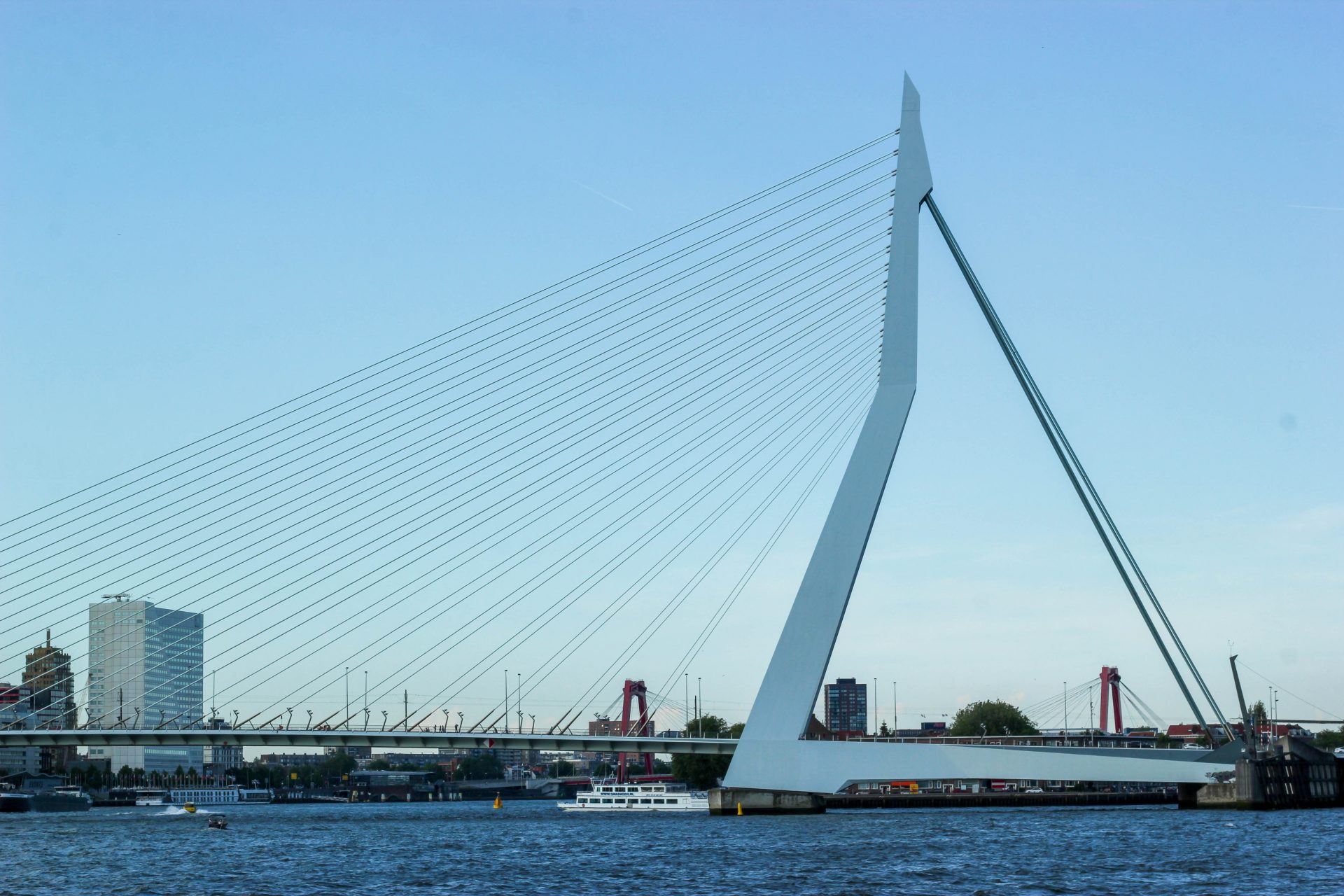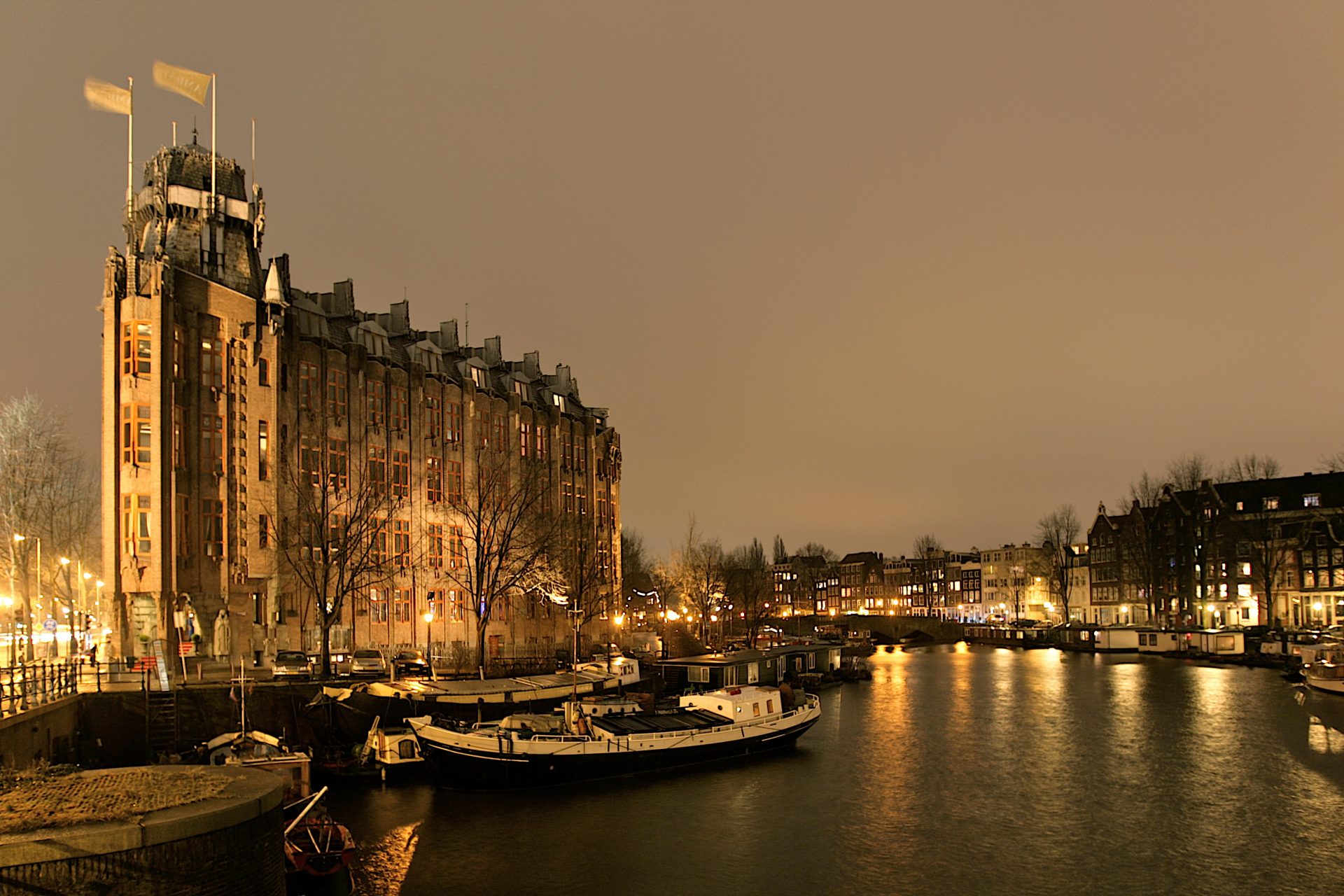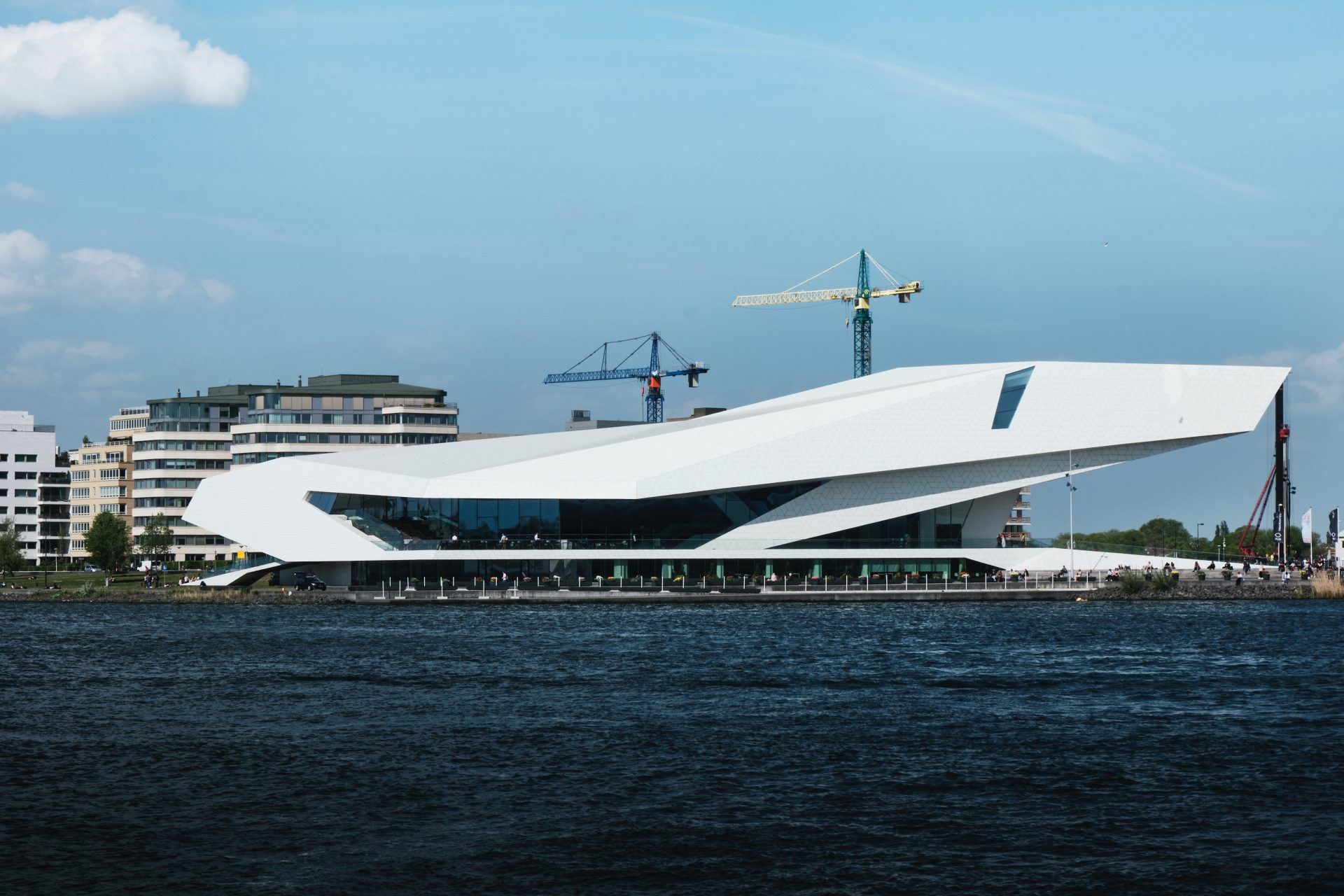Architectural wonders in Amsterdam and The Netherlands
Dutch architecture is a realm of remarkable craftsmanship, creativity, and ingenuity. In the capital of The Netherlands, Amsterdam, as well as in other cities, you can find beautiful historical monuments and modern icons. In the following slides, we take you on a journey through time.
The Rijksmuseum, designed by architect Pierre Cuypers, opened its doors in 1885. The building is a mix of Gothic and Renaissance styles. In addition to the works displayed inside of the museum (Rembrandt, Vermeer, and other masters), the building itself is a true architectural masterpiece.
In addition to the Rijksmuseum, Pierre Cuypers also designed the special Central Station. The original building is known for its striking architecture, with Cuypers drawing inspiration from the Gothic architectural style. His design combines artistic elements with technical ingenuity, making the train station both aesthetically and functionally impressive.
The Dom Tower was built in the Gothic style over a period of 35 years and completed in 1382. Its architect and constructor was Jan van Henegouwen. The tower has a height of 112 meters (367,45 ft), which makes it the highest church tower in the Netherlands. The church consists of several parts, including the main doorway, lantern, and spire. In addition, the tower has a wind vane with Saint Martin on top.
The Erasmus Bridge in Rotterdam, designed by architect Ben van Berkel, connects the new southern district with the center of the city. It was officially opened on September 4, 1996. With a length of 808 meters (2650,9 ft) and an asymmetrical steel pylon of 139 meters (456 ft) high, the bridge has become a striking symbol. Some could say that it looks like a harp, but many people have settled on calling it "the Swan."
Image: Micheile Henderson / Unsplash
Theater Tuschinski in Amsterdam opened on October 28, 1921. With its opulent entrance and beautiful Jugendstil, Art Deco, and Amsterdam School elements, it is one of the most beautiful cinema theaters in the world.
Photo: Liam McGarry / Unsplash
Originally a town hall, the Royal Palace on the Dam Square in Amsterdam is an iconic seventeenth-century monument. Designed by architect Jacob van Campen, it reflects the power and wealth of Amsterdam's administrative elite at the time. It is the largest and most prestigious building from the 'golden' seventeenth century and an example of Dutch classicist architecture.
Photo: Frans Ruiter / Unsplash
In 1400, the important city of Delft got a city wall with eight gates. They served as the only entrances to the city and provided a strong defense against intruders. The Oostpoort, consisting of a land gate and a water gate, connects the last remaining part of Delft's city wall and is a beautiful example of medieval architecture.
Photo: Ton Koorevaar / Pixabay
The Van Gogh Museum has a varied architectural history. The main building, designed by Gerrit Rietveld, opened in 1973. The exhibition wing, designed by Kisho Kurokawa, was completed in 1999. Rietveld liked straight lines and clean shapes in his designs, while Kurokawa played with different shapes and embraced nature. You can see that Rietveld often designed square or rectangular buildings, while Kurokawa made buildings that looked organic and adapted to the environment.
Photo: Emoro / Pixabay
It may not be the first thing you think about visiting when you're in The Hague, but this art museum is definitely worth a look! Its beautiful Art Deco building was designed by architect HP Berlage. The striking yellow-brick complex offers space, radiant light, and a modern use of color. HP Berlage liked to make buildings that were practical and useful. You can see that in this museum.
Photo: Arie Fric / Pixabay
This building in The Hague is especially famous around the world. The Peace Palace, designed by the French architect Louis Cordonnier, is an imposing monument. It combines international elements from earlier centuries with the architectural influences of the Netherlands, with architects such as Johan van der Steur. The amalgamation resulted in a magnificent masterpiece that is both stately and harmonious.
Architect Piet Blom made the famous and remarkable cube houses in the neighborhood of Blaakse Bos in Rotterdam. They are typical of 1980s futuristic architecture and draw visitors from all over the world. The tilted cube-shaped houses are also known as tree houses. They were inspired by the work of the Swiss-French architect Le Corbusier.
The Markthal or Market Hall is the first roofed market floor in the Netherlands. You can find it in the heart of Rotterdam. A cultural landmark, the Markthal brings tradition and modernity together. Inside you can admire the largest mural of the country, the Horn of Plenty.
The Scheepvaarthuis (Navigation Building) in Amsterdam was designed by architect Joan van der Meij in collaboration with the van Gendt brothers. It's a striking example of the Amsterdam School's architectural style. A national monument from 1974, it reflects seafaring in every detail, thanks to the contributions of renowned architects, sculptors, and stained glass artists.
The Rietveld Schröder House in Utrecht, built in 1924 by architects Gerrit Rietveld and Truus Schröder, was included in the UNESCO World Heritage list in 2000. The house, now a museum, is an important example of De Stijl architecture. Truus Schröder had a major influence on the design, which deviated from traditional divisions, according to Cultuurarchief.nl.
Photo: Andreas H. / Pixabay
The buildings and architecture of the Netherlands reflect the country's history and identity. From stately canal houses to modern designs, each building tells its own story. They are a source of inspiration for future generations.
In the image: the EYE film museum's modern building opened in 2012 across the river IJ behind the Amsterdam Central Station. Photo: Frans Ruiter / Unsplash



























